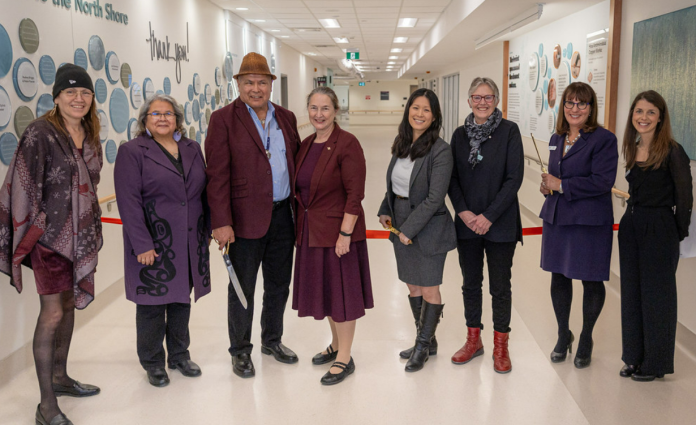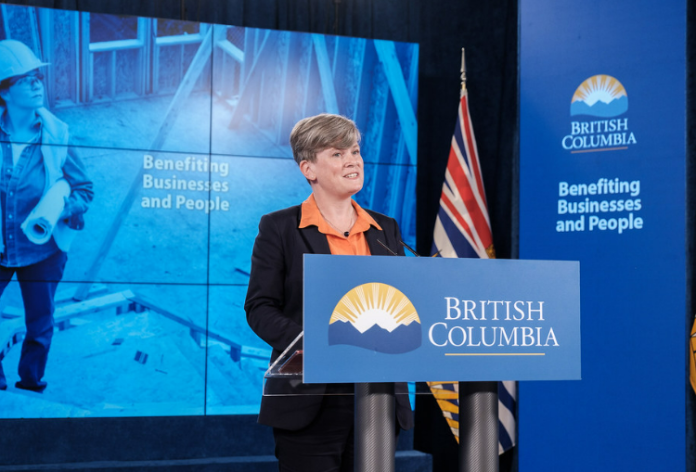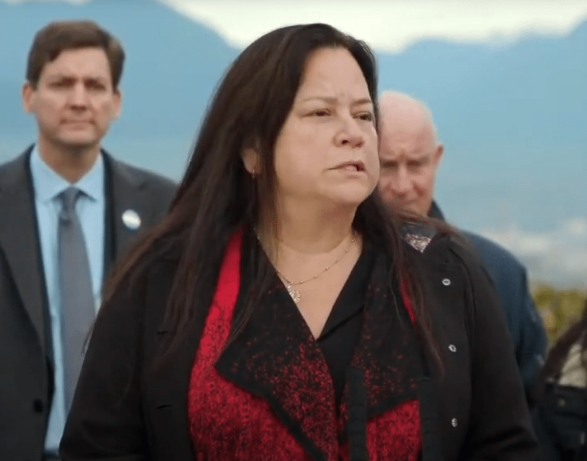People on the North Shore and in neighbouring communities will soon have enhanced access to health care services in the new, modern acute care tower at Lions Gate Hospital, opening March 9, 2025.
“I’m thrilled this new hospital tower is now complete, and families in North Vancouver and beyond will have better access to high-quality health-care services, closer to home,” said Bowinn Ma, Minister of Infrastructure. “Our government is making record investments to support growing communities, and we’re committed to delivering more hospitals, health-care centres, and other important infrastructure.”
The new six-storey tower is named after local philanthropist and businessperson Paul Myers. It has eight state-of-the-art operating rooms with a new medical device reprocessing department, as well as a pre-operative and post-operative care area, including anesthesia intervention and isolation rooms. There will be 108 beds in private patient rooms, all with ensuite washrooms.
Vancouver Coastal Health worked in collaboration with Sḵwx̱wú7mesh Úxwumixw (Squamish Nation) and səlilwətaɬ (Tsleil-Waututh Nation) advisers on key aspects of the project to honour the host Nations and help create safer, welcoming and culturally appropriate spaces for Indigenous patients and families.
“It’s terrific news for people living on the North Shore and area that the new patient care tower at Lions Gate Hospital is opening to meet the needs, comfort and well-being of people receiving care,” said Josie Osborne, Minister of Health. “By investing in state-of-the-art facilities around B.C., including the new Paul Myers Tower, we are truly investing in better health outcomes for British Columbians. This is part of our commitment to strengthen B.C.’s public health-care system.”
The acute tower was designed to provide patient- and family- centred care. It features a variety of spaces to support patients, family and staff well-being, including lounges, a House of Elders office, a sacred space, additional bike storage and a rooftop garden with a walking path. Further, innovative technologies and an upgraded nurse call system, improve patient experiences and enhance safety for patients and staff.
Construction began on the project in fall 2021. The total capital cost of the project is approximately $325 million. Funding is shared between the Province, Vancouver Coastal Health and the Lions Gate Hospital Foundation. Myers donated $25 million to the foundation’s $100-million campaign.
“We’re excited to care for patients in this new space,” said Jillian Morland, clinical nurse educator, Lions Gate Hospital at Vancouver Coastal Health. “The clinical spaces are larger and designed for flexibility and efficiency to better accommodate our teams. The technology upgrades, such as access to Vocera and Masimo, will enable us to deliver the highest quality care possible.”
Lions Gate Hospital provides a full range of acute-care services and many specialized services. With the 108 beds and eight operating rooms in this new tower, the Lions Gate Hospital will have a total of 329 beds, 10 operating rooms, and a variety of diagnostic services and equipment. The hospital also offers emergency and critical care, maternity, pediatrics, psychiatric, chemotherapy, cardiac care, palliative care and rehabilitative services.
This hospital will continue to serve patients from the Sea-to-Sky corridor, Sunshine Coast, Bella Bella and Bella Coola on the Central Coast, including the Heiltsuk, Kitasoo-Xai’xais, Lil’wat, N’Quatqua, Nuxalk, Samahquam, shíshálh, Skatin, Squamish, Tla’amin, Tsleil-Waututh, Wuikinuxv, and Xa’xtsa communities.
Quotes:
Chief Jen Thomas, səlilwətaɬ (Tsleil-Waututh Nation) –
“It is heartening to know the Paul Myers Tower in North Vancouver will soon open its doors as it will provide improved culturally informed health care for our Tsleil-Waututh Nation members and all Indigenous patients. VCH has demonstrated they are walking the path of reconciliation by engaging with us as partners to advise on how our traditional lands and waters could be reflected in the tower’s design. I’m proud to know the building will tell the story of our culture, incorporate our hən̓q̓əmin̓əm̓ language, and hold space for Elders as they access important health services.”
Sxwixwtn, Wilson Williams, spokesperson and council member, Sḵwx̱wú7mesh Úxwumixw –
“Through close collaboration with both the Sḵwx̱wú7mesh (Squamish) and səlilwətaɬ (Tsleil-Waututh) Nations, Vancouver Coastal Health was able to create a modern space that still reflects our values, traditions and cultures. From the façade resembling our Long Houses, to our stories and languages reflected throughout the interior and healing spaces, Paul Myers Tower is a thoughtful example of what can be accomplished when working meaningfully with First Nations to create a state-of-the-art medical facility that will benefit everyone across the North Shore community.”
Susie Chant, MLA for North Vancouver-Seymour –
“The completion of the Paul Myers Tower in North Vancouver will significantly improve health-care services for people on the North Shore. This new acute care tower will modernize community health services enabling faster, more accessible services closer to home.”
Dr. Penny Ballem, chair of the board, Vancouver Coastal Health –
“The Paul Myers Tower’s patient-centred design will improve the care experience for patients and their families and will help both present and future needs of a growing and aging population. We are grateful for the collaboration with host Nations, patients and community organizations as well as our dedicated staff and medical staff in co-creating a site that will transform the future of health care in our region and beyond.”
Judy Savage, president and CEO, Lions Gate Hospital Foundation –
“The remarkable lead gift of $25 million from North Shore Philanthropist Paul Myers inspired people to give what they could to help bring this much-needed facility to the North Shore. From official foundation events, and multi-million-dollar contributions, to community fundraisers and the proceeds from lemonade stands, every donation was essential in helping us raise $100 million toward the cost of a new medical and surgical centre and an additional $20 million to support technology transformation for the Lions Gate Hospital campus.”









